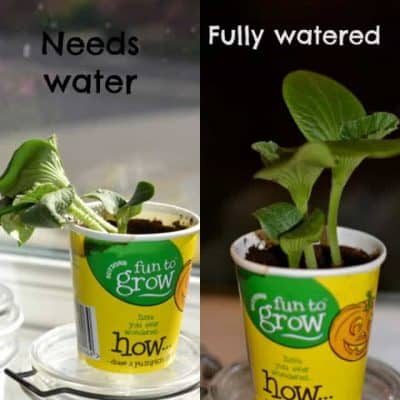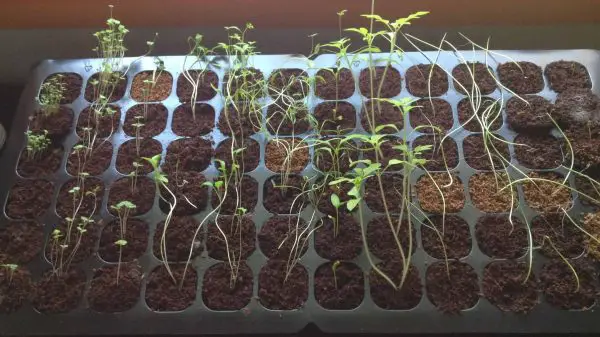What do Plants Need to Grow and Survive?
In nature plants grow in their natural environment with everything they need around them. However, when we create a garden, we need to ensure that we provide plants with everything they need for them to survive.
Humans need food, water and air to survive and like us plants have certain requirements.
Think of plants like a factory production line, raw materials go in and then they create protein, starches, fats and even their own hormones, enzymes and colouring’s.
Just like a factory plants need to be supplied with raw materials on a regular basis, if you run out of a certain raw material then you will notice some of the following: poor growth, smaller yields on vegetables and fruit, less flowers.
We don’t need plants to be running at peak production all the time, what we do want is for plants that grow well and look good in a garden environment.
Keeping plants supplied a with everything they need is a key secret in creating a fantastic growing environment.
Why do plants need water?
Plants are made up of around 90 % water, they don’t store the water, instead water acts like blood in humans transporting everything apart need around. The water gets sucked up through wall root hairs and then evaporate through the leaves, this happens through tiny openings in the leaves called stomata. As the water from the leaves evaporates through the stomata carbon dioxide enters taking the waters place. This exchange of water for carbon dioxide only happens during daylight.
The process of water entering through the root hairs is also how plants absorb minerals and nutrients from the soil.
Water is also critical for photosynthesis, more on photosynthesis later when we look at why plants need light.
The faster plant grows the more water it needs, also the hotter and drier the air the more water the plant needs. However, there may come a point when a plant can’t cope with the amount of water needed, this usually happens because it’s either too hot or there is not enough water at the roots. At this point a plant will stop growing and the leaves will start to wilt (this process is started automatically once the water pressure drops around certain cells in a plant).

Comparison of a plant needing water and one watered. Source
Whenever you see a plant with its leaves starting to wilt that is a sign that that plants need urgent attention. If you ignore it, then the plant may die.
Once the temperature drops or the plant has sufficient water and the water pressure returns to normal then normal growing conditions will resume.
This is why newly planted plants, vegetables, trees, shrubs and even climbers need watering on a regular basis until their root system gets established into the surrounding soil and able to gather water and moisture.
Why do plants need light?
As humans need energy to grow and we get energy from food, plants get their energy from light and this process is called photosynthesis. This is the process that starts off plants production line, it only happens with light and the plant doesn’t get enough of it then they can’t reach their full potential.
Different plants need different amounts of light some more than others, some plants have adapted to grow in low light. These are plants that we usually grow as houseplants, ferns, hostas, and the tropical plants that live naturally under the canopies of trees. This is why they’re so happy indoors, conditions in our home are almost identical to that of the tropical jungle in terms of shade and temperature.
Sun loving plants need a lot of direct sunlight otherwise they will become leggy and grow weak, if they don’t get enough sunlight, they aren’t flower either.
If you grow vegetables and plants from seed then you must provide seedlings with sufficient light and light for the right amount of time, otherwise they will become leggy.

Leggy seedlings stretching out to try and reach the light. Source
Why do plants need warmth?
There are thousands upon thousands of different plants and they have evolved to suit different temperature regimes.
You can find plants almost everywhere you go on planet Earth, however because of temperature differences around the planet, the same plants don’t grow everywhere. If we want to grow some of these plants in our gardens, sometimes we need to use greenhouses or conservatories especially if we’re trying to grow exotic species of plant.
That’s why it is extremely useful to know your own garden climate and the hardiness of the plant.
When trying to grow plants from seed you will notice that they require warmth to germinate, you may hear the term “soil warmth” or “when the soil has warmed”
When the temperature drops reactions inside cells slow down, growth, metabolism, all slow down.
Plants native to areas with sub-freezing winters survive by going dormant, the onset of spring i.e. warmer weather causes them to wake up and begin vegetative growth again.
Why do plants need soil?
Well, to be honest nowadays plants don’t need soil if you are using a growing method called “hydroponics”. Hydroponics is the system of growing plants in water and adding nutrients. This practice is mainly used by commercial growers and not your common gardener.
So, plants can grow without soil but they can’t grow without the necessities that soil provides.
Going back to the original question: why do plants need soil?
Soil is a medium for plants to grow from which plants can obtain chemical elements (nutrients) these can be broken down into mineral and non-mineral.
A plants capability of absorbing these nutrients depends on the soil’s composition, the amount of sand, clay and organic matter within it. Ideally the optimum soil composition would be equal parts of sand, clay and organic matter.
Soil composition effects water retention and nutrients available.
The pH level of soil also affects the nutrients available, be it macronutrients or micronutrients.
Soil provides support and anchorage for roots to hold onto as the plant gets bigger the plant then uses the roots to absorb moisture and nutrients from the soil.
Soil also provides air for plants roots; they get the air from space between tiny soil particles. Soil is naturally porous or at least it should be. If you have a look at Sandy soil, you will notice that it is made up of large particles with large air spaces, this is why Sandy soil dries out quicker, the water just runs through it quicker.
Why do plants need air?
There are two main reasons as to why plants need air:
- Plants need air from above ground. Air provides plants with the oxygen and carbon that they need (along with sunlight) to be able to photosynthesise, which is the process of how plants grow.
- Plants need air from below ground. They need oxygen to breathe; they get the air from tiny air spaces between soil particles.
Good soil drainage allows air into the soil for the roots to use, this prevents root failure, when roots fail, plants cannot function properly. It effects their ability to absorb water and nutrients.
Root failure is a common cause of plant stress and quite common with houseplants.
